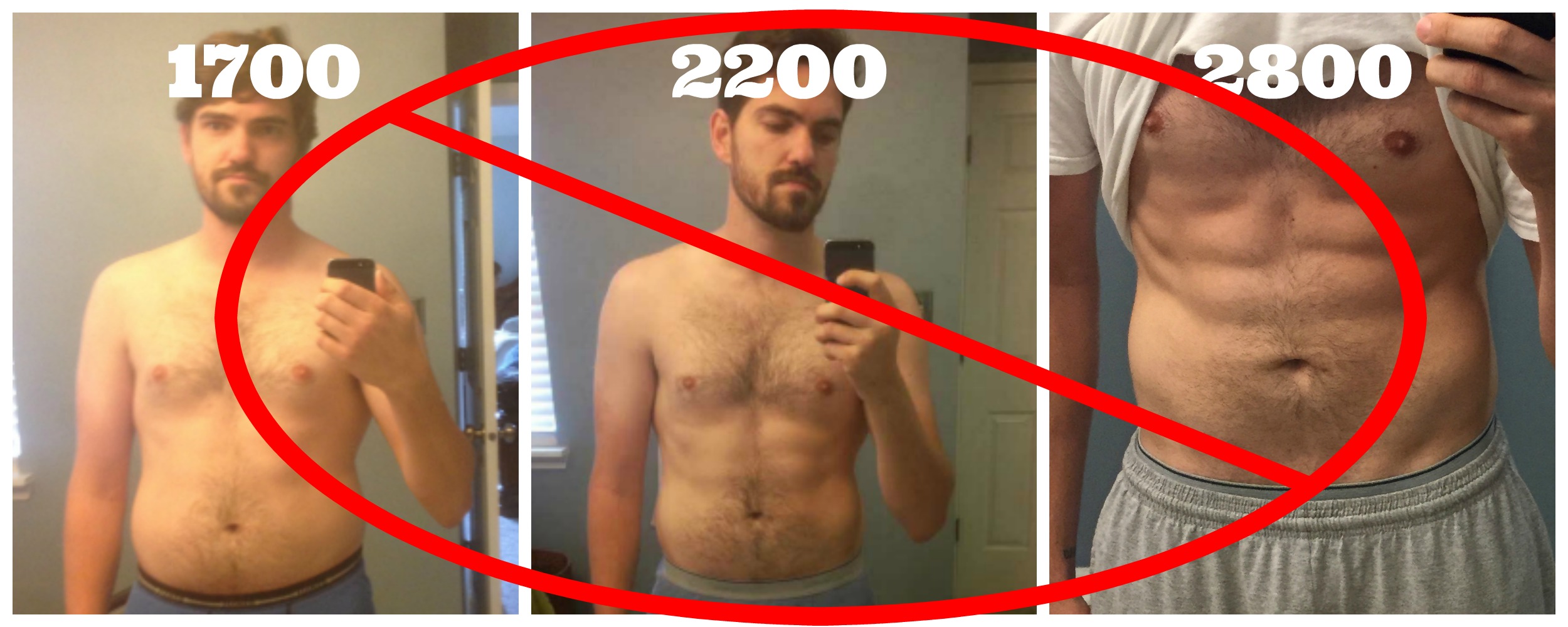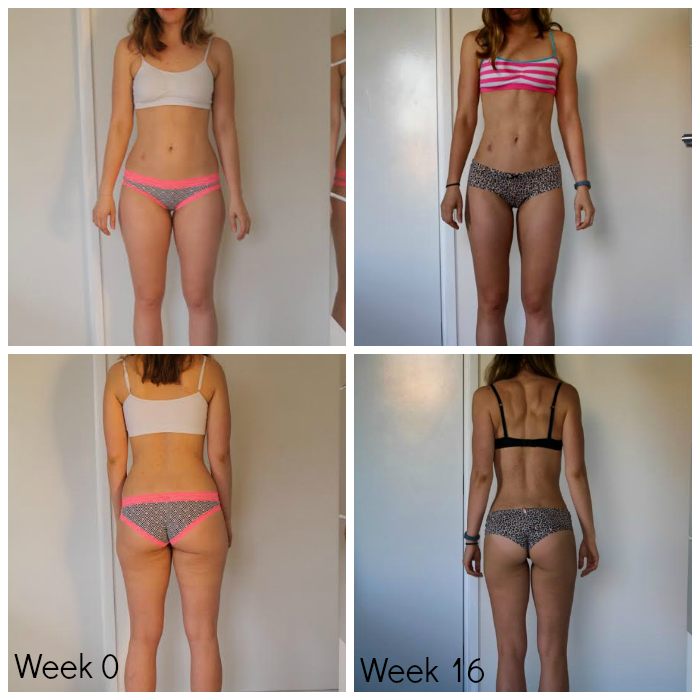What Is Reverse Dieting (A Comprehensive Guide)
Posted by Michael Vacanti

Reverse dieting: slowly adding calories to your food intake over time.
.
In This Article:
- What is reverse dieting?
- Who should reverse diet?
- What reverse dieting IS NOT
- How exactly do you reverse diet?
- Is reverse dieting better than going straight to maintenance calories?
- FAQ
INTRO
Let’s pretend you want to compete in a bodybuilding show.
You don’t, but go with it.
For six months, you track every calorie and macro. You strength train, do your cardio, say no to In-N-Out, and work your butt off.
The day arrives, and you step on stage completely shredded!
(Remember: “stage” might be your wedding, class reunion, or photo shoot… reverse dieting is still relevant)
After the show, your only goal is to get a molten hot lava chocolate cake down your GI tract as quickly as humanly possible.
So you go to Applebees.
After 11,000 calories and a few laughs with friends or family, you go home and sleep like a baby.
No damage so far.
You wake up the next day, carb-loaded and looking amazing, but you are also a bit lost.
What The Hell Are You Supposed To Do Now
You are leaner than you’ve ever been.
But you don’t have a plan to follow.
So what happens next?
You eat.
Double-Doubles and strawberry shakes and everything else you missed so dearly, all under the lazy rationalization that it’s necessary “for the gains.”
Or maybe you take a less binge-y approach and simply stop tracking in favor of intuitive eating, something you read about on the internet.
However, it turns out your calorically deprived intuition just wants every gram of dietary fat that ever existed, regardless of how strong your deep breath game is or on which hunger cues you focus your zen.
You find yourself 30 or 40 pounds heavier just a few weeks post show (this actually happens)
Soggy and sans abdominals, you sink into the couch watching a Mike Vacanti Vlog on YouTube where he tells you that starting a “lean bulk” at your body fat percentage is less than optimal.
Other parts of the internet say you have a binge/restrict issue; that can’t be good.
Still others say your metabolism could be ruined forever unless you buy their $129 bottle of recurred billing nonsense.
Where did we go wrong??
Enter Reverse Dieting
What if we didn’t eat all of the calories on earth post show?
I know, crazy.
(remember… your show might getting lean for that spring break trip, not for your own happiness but instead because you know your ex stalks you on instagram)
What if instead we applied those very same principles that got us lean – monitoring calories and macronutrients, strength training with intensity, properly resting and recovering – and we used them to maintain our new condition?
A little annoying, sure.
Tracking food on the OTR app isn’t the most fun thing in the world.
But it is certainly better than the alternative: burying your hunger cues with each bite of Reese’s puffs, Kemps vanilla ice cream, and chocolate syrup, as you rewatch season 3 of One Tree Hill and wonder if you were Keith could you have saved Jimmy Edwards.
Note: Ben & Jerry’s and Talenti are the only ice cream brands I currently endorse. However, post-show, you aren’t eating ice cream by the pint for enjoyment. You are shoveling self hate down your throat by the gallon. And we need to economical about it. So, Kemps is in play.
Anyway, in this very moment, you decide you probably should have reverse dieted.
What Is Reverse Dieting?
To “Reverse Diet” is to slowly add calories at the end of a diet, usually with the primary purpose of maintaining your new physique and not gaining body fat.
I came across this concept several years ago watching a biolayne video log.
Since then, I have used reverse dieting on myself as well as with hundreds of coaching clients, and I am pleased with the results.
What Reverse Dieting IS NOT
This is important.
Let’s take John as an example.

John is actually a coaching client who kills it, but I’m using his progress pictures with false calorie numbers to tell a story.
I often hear people say,
I’m not losing fat because I just don’t eat enough!
If I eat more calories… THEN I will get leaner.
At least not in the short run.
It is far more likely you simply are not tracking calories with much accuracy. You are eating more than you think. Those handfuls of almonds here and there, despite having enough omega sixes to make your paleo heart skip a beat, still count.
The Instagram dream of “eating more to lose more*” is just that: A Dream.
*if you buy my ebook
Now, it might make sense to increase calories over time to increase your metabolic rate and make future fat loss easier. But increasing calories in the short term does not increase fat loss.
You don’t get leaner by eating more food.
And while John, or anyone posting progress pictures with corresponding calorie numbers, could be eating more calories with that physique, it was not the calorie increase that got them there.
Sometime between those two photos, they lowered their intake (or drastically increased activity) to lose that body fat.
Advantages of Reverse Dieting
Having A Plan Prevents Yo-Yo Dieting
This is the main reason I have coaching clients reverse diet.
Having a plan to increase calories for 4-8 weeks generates far better adherence than an immediate adjustment of 500-700 calories (going back to maintenance).
Now, if you complete your fat loss phase and want to jump straight to maintenance and you have no problem tracking, that is fine with me.
However, in my experience, reverse dieting yields better nutrition adherence.
You Can’t Overshoot Maintenance
Going straight back to maintenance after a deficit is a popular strategy, in fact, probably the norm. And I am not completely opposed to it.
The problem is that estimating maintenance using an equation doesn’t make sense.
What YOU think your calorie maintenance is, which is probably based on what some article on the internet says (bodyweight x 15, for example), is likely going to be an overestimate.
Here is why:
You have been in a deficit for many months. Your BMR has come down a bit. Your spontaneous movements are few and far between.
Your calorie maintenance is quite a bit lower than it was when you started dieting.
By reverse dieting, we no longer need to estimate.
Instead, we can assess hunger and progress so that we don’t overshoot maintenance, even in a reverse diet as short as 3-4 weeks.
Again, I don’t hate going back to maintenance as a strategy.
I have seen many clients do this successfully.
The whole self-hate / ice cream thing was just me being weird and authentic as a writer. Which, if you follow me on snapchat, you know is a major key 😉
Increase Your Metabolic Rate
Warning: not enough science here.
So, take this one with a huge grain of salt.
There is some evidence that leads me to believe over a long period of time, slowly increasing calories (primarily carbohydrates) allows for us to stay lean while eating more food, or effectively, increases our TDEE.
The reason, I hypothesize, is that some parts of our metabolism change when we eat more food. For example, spontaneous movements (non-exercise activity thermogensis) increase in a calorie surplus, allowing us to eat more food without gaining the expected amount of body fat.
While this isn’t the primary reason I use reverse dieting with clients, I have seen others successfully add a small amount calories (20-30 per week) over a long period of time (24-48 weeks) and seemingly increase their metabolic rate without adding much body fat.
Potential To Lose More Body Fat
This one is pretty straight forward.
You are very likely still in a calorie deficit when you begin your reverse diet.
So, you will probably lose a bit more body fat.
An advantage, if you’re into that.
Disadvantages of Reverse Dieting
You have to continue counting macros in a deficit for a few more weeks.
Wait, that’s it?? 😉
Who Should Reverse Diet?
Anyone, really.
But there are two specific types of people that see disproportionate benefits from a reverse diet.
Just Got Lean | First Time Ever
If you have never been truly lean until now, you probably only know two styles of eating: Paying attention to calories and macronutrients. And not paying attention.
You don’t have experience estimating macros or eating intuitively (which, with enough practice, can also be an effective strategy).
Abandoning the strategy that got you lean will often bring back your old dietary habits.
By reverse dieting, we keep the same principles while eating more food.
Determined To Maintain New Physique
If you are determined to stay lean and not gain an ounce of body fat, you should reverse diet.
This needs little explanation; a slow increase in calories removes maintenance guesswork from the process and will allow you to stop increasing intake before any body fat is added.
FAQs
Will I Get Leaner During My Reverse Diet?
It depends.
Let’s say you are 5’7″ and just lost 25 pounds.
You went from 150 to 125, and you are very pleased and ready to stop losing fat.
If you reverse diet for ten weeks, you will still be in a decent sized calorie deficit.
Week Intake TDEE
1 1320 1900
2 1400 1910
3 1480 1920
4 1550 1930
5 1630 1940
6 1710 1950
7 1790 1960
8 1870 1980
9 1950 1990
10 2030 2000
While calories have increased week over week, you have still been in a deficit the entire time. As a result, it is fairly likely you continue to lose body fat.
Here is an example where you would not get leaner:
Jenny is 5’9” and weighs 124 pounds. She has been doing 90 minutes of cardio every single day for six months. She isn’t sleeping well. While she lost weight during her first few months, she has stalled and hasn’t seen the scale move in eight weeks.
Her coach keeps lowering her calories because she still wants to be leaner. But at 1100 calories per day, she has stalled out.
This is a different kind of reverse diet. Jenny’s BMR has likely come way down. Her body is acting efficiently in an attempt to prevent starvation.
During Jenny’s reverse diet, I would NOT expect her to get leaner.
Will I Gain Fat During My Reverse Diet?
It is possible the scale will increase during your reverse diet.
Part of the reason for this is because you are eating more carbohydrates than you were previously consuming. Most carbs are stored in our muscles. When this happens, our body retains more water.
So, it is more likely those carbs are creating a scale weight increase rather than you adding body fat.
However, we can test this!
Waist circumferences measurements are highly correlated with fat gain/loss. So, if your waist measurements are staying the same, despite what the scale says, it is very unlikely you are gaining body fat.
Is Reverse Dieting Only To Be Used After A Fat Loss Diet?
No.
Remember that discussion about adaptive metabolism and increasing your metabolic rate? That is another reason to reverse diet.
I have used reverse dieting for women who stalled out during fat loss.
Often, highly stressed, overworked, underfed women who were eating between 1000-1200 calories and legitimately not losing fat.
Again, reverse dieting to increase your metabolic rate is still shaky on paper, but in practice I have seen it work dozens of times.
How Long Should I Reverse Diet For?
If you are reverse dieting back to maintenance, 4-10 weeks is a good range.
Obviously, the downside of a longer reverse diet is that you are effectively stealing time from your next goal.
However, if you are reverse dieting to increase your metabolic rate, then something much longer probably makes sense (20-40 weeks); and plan on building muscle during this time.
Where Are The Studies?!
I’ve got no studies for you 🙁
Reverse dieting is a new concept, and I don’t have sound research outside of my personal observations and coaching experience.
Obviously, research around the components of metabolism, nutritional sciences, and weight gain/loss are at the core of this article. However, I don’t know of any controlled studies specifically testing reverse dieting.
Can’t I Just Go Back To Maintenance After A Fat Loss Diet?
You sure can. Especially if you are okay with possibly overshooting maintenance and adding a pound of body fat 🙂
You can also reverse diet more quickly, over the course of 2-3 weeks.
I Started Adding Calories, And My Scale Weight Started Dropping Faster: Why Is This?
First, that’s awesome 🙂
I see this with decent frequency, actually — being in a calorie deficit increases stress (cortisol levels). Cortisol is a hormone that impacts water retention.
When we increase calories, cortisol levels come down.
So, you probably aren’t losing body fat at a faster rate, but you see the scale drop as a result of decreased water retention.
Which Macros Should The Extra Calories Come From When Reverse Dieting?
In How To Count Your Macros (A Comprehensive Guide), we discuss setting up your intake of proteins, carbohydrates, and fats. The On The Regimen App also calculates your intake.
The equations I use set protein high enough to retain lean mass, and fat high enough not to miss out on the benefits of dietary fat.
Carbohydrates are the “filler” macro to reach our target calories for your goal.
So, when reverse dieting, it makes sense to increase carbohydrates the most. Carbs are also less likely than fat to be stored as fat, so it makes sense to keep a higher carb low-ish fat diet (for many people) if building muscle is your next goal.
The truth it, so long as calories are increasing, this is 90% art, 10% science. I like to decrease protein slowly, because the smaller your calorie deficit, the fewer grams protein you need.
Conclusion
Reverse dieting is an effective way to maintain your lean condition after a wedding, vacation, or body building show.
If you have any thoughts or questions, you know leaving a comment below will help validate my existence on earth 😉
Allie’s full set of progress pictures:



Pedro Sangüesa
Excellent post Mike! What about the sugar post next week?January 23, 2016 at 11:26 am |